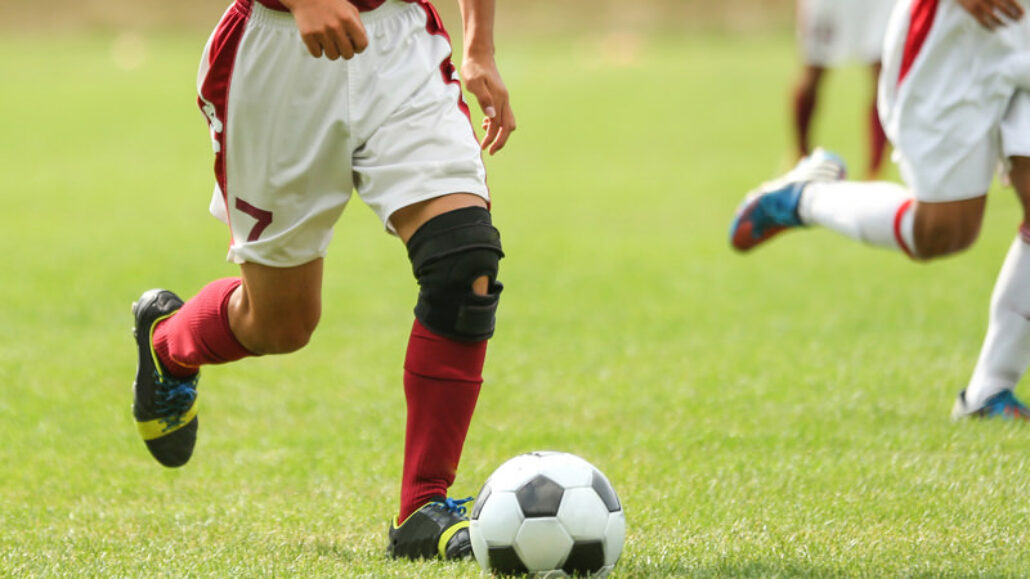There are multiple treatment options for ACL injuries, and new research tells us that age is an important factor in selecting the treatment that will deliver the best outcome. Dr. Skendzel explains how age influences the surgical approach he recommends for an ACL reconstruction.
Rise of ACL Injuries
Every year, thousands of Americans injure or tear the anterior cruciate ligament (ACL) in their knee. As competitive sports teams for school-age athletes have become more popular, we are seeing more ACL tears in young athletes. Emerging research shows that for young athletes, the type of ACL repair they receive can significantly affect their surgical outcome.
ACL injuries can result from collision with another player, but the damage can also happen when a person suddenly changes directions, pivots, or lands incorrectly after a jump. When the ACL tears, it is unable to heal itself. Reconstructive surgery can’t stitch the torn ligament back together, so instead a “new” ACL is created with a graft.
“ACL reconstruction surgery focuses on removing the torn ligament and replacing it with a graft, using either the patient’s own tissue or tissue from a cadaver,” explains Dr. Skendzel. “Research tells us that the type of graft we use in a young patient has a significant impact on the outcome of a first-time ACL reconstruction.”
Impact of age and ACL surgery options
Recent studies have shown that ACL outcomes in younger, more active patients are more successful when their surgeon uses the patient’s own tissue—and not a cadaver graft—to reconstruct the ACL. “There is always a risk that a graft will fail following reconstructive surgery,” Dr. Skendzel explains. “When recent studies looked at outcomes in 18-year-old patients, they found that when a graft from a cadaver was used, one out of every five reconstructions failed. But when a graft harvested from the patient was used, the success rate went up significantly; only one in every 17 grafts failed.”
As the patient’s age increases, the advantage provided by patient grafts drops. By age 40, there’s less than a 2 percent difference in successful outcomes between patient grafts and cadaver grafts. Researchers don’t know why.
“Both procedures require an incision and involve arthroscopic techniques,” explains Dr. Skendzel. “When we use a graft from the patient, a graft harvest is part of the surgical process so the patient is recovering from two incisions instead of one. For younger patients, this additional discomfort may be offset by the increased likelihood of a successful outcome. We weigh all the risks and benefits when we make these surgical decisions.
“Part of our mission at Summit Orthopedics is to make sure we can offer our patients the best and safest treatment options available,” says Dr. Skendzel. “When it comes to ACL reconstruction surgical options, that means considering all of the risks and benefits to choose the approach that will maximize an individual outcome.”
Summit Orthopedics offers comprehensive sports medicine expertise
From Olympians to pro athletes to kids in youth sports and those that just want to be more active—Summit Orthopedics delivers expert care by fellowship-trained sports medicine physicians. If you are recently injured or concerned about ongoing pain, Summit Orthopedics sports medicine specialists have the expertise to evaluate your discomfort and develop a plan to quickly and safely help you get back to being active.
Start your journey to stronger, healthier athletic condition. Find your sports medicine expert, request an appointment online, or call us at (651) 968–5201 to schedule a sports medicine consultation.
Summit has convenient locations across the Minneapolis-St. Paul metro area, serving Minnesota and western Wisconsin. We have state-of-the-art centers for comprehensive orthopedic care in Eagan, MN, Vadnais Heights, MN, Plymouth, MN, and Woodbury, MN, as well as several additional community clinics.
Additional resources for you
- Learn more with our condition guide: Knee Ligament injuries: Tears of the Anterior Cruciate Ligament
- Check out the article: Comparing ACL Reconstruction And Bridge-Enhanced ACL Repair Surgeries
- More on Summit’s Sports Medicine services
- From American Academy of Orthopedic Surgeons (trusted external resource): ACL Injuries

